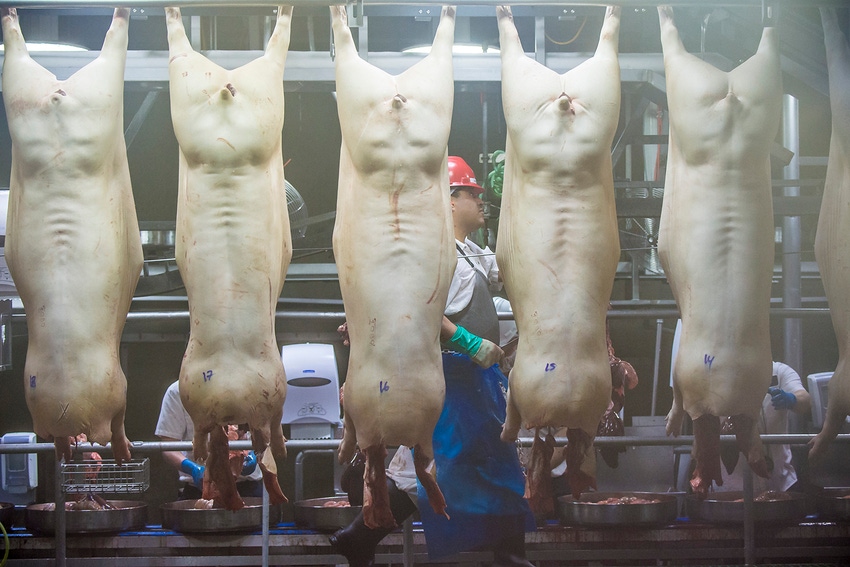Trichinae surveillance to calm foreign buyer’s fears
6.2 million samples over a two-year period should provide proof to foreign customers that U.S. pork is safe.
February 4, 2019

Trichinae has not been found in the U.S. swine herd for at least 25 years, and America’s pig farmers know that, but that is hard to get across to foreign customers.
“U.S. pork producers are doing a tremendous job in production to have eliminated trichinae from the swine herd through Pork Quality Assurance Plus (PQA Plus), and we have taken for granted the fine job producers and the industry have done,” says Bobby Acord, former administrator of the USDA Animal and Plant Health Inspection Service now working with the National Pork Producers Council.
Though producer participation and certification in PQA-Plus and modern hog production practices have eliminated trichinae in the domestic herd, the foreign consumer wants proof that these practices truly have eliminated the parasite from the pork supply.
In 2015, the CODEX (“food code”) adopted a new global standard to define negligible trichinae risk in pigs, and to comply the U.S. pork industry must be able to prove product contains no risk. To be able to quantify and offer data of proof of negligible trichinae risk, the NPPC secured APHIS funding to develop a surveillance program that over a two-year period will test 6.2 million samples from the hanging tender to determine that trichinae does not exist. The only cost to the packer is the added manpower to collecting the 10-gram (0.35-ounce) samples. Acord says the numbers of samples requested from each participating plant is determined as a percentage of each plant’s daily kill.
Steve Larsen, National Pork Board assistant vice president of Science and Technology, says U.S. packers are coming on board, and the specifics of the sampling procedures will be left up to the individual plants. “We want this to be the least burdensome for them,” he says, adding that it is important to have good representation from the packing industry, both from a slaughter capacity level and geographic area. “We want to be able to tell our foreign customers that our sampling covers all areas of the U.S., so they can be assured that our product is safe regardless where the plant is located.”
Currently, the countries questioning the safety of U.S. pork in regards to trichinae require mitigation efforts to calm their fears, and the main mitigation is to freeze the pork product prior to shipping, adding cost. “Just think of that, the extra cost of freezing the product, and keeping it frozen to get it into the export market,” Larsen says.
In addition to adding costs to the process, Acord says freezing the pork product also reduces the quality, potentially robbing the end consumer of having the best-possible dining experience.
With U.S. producers doing their jobs of producing a safe and healthy pork product, this Trichinae Surveillance Program is aimed to provide assurance in the global marketplace that U.S. product is indeed safe. “We need to do this to protect our export market,” Acord says. “We want to provide data, and without data, we’ll be left out in the cold. … this is good for trade in the long run; it’s a tremendous return on the investment.”
Acord feels a safe U.S. pork product backed up with data can go a long way in maintaining, or even strengthening export markets. “I think we could send a lot more to South Africa,” is one example.
Larsen says, “this will help maintain export markets, and open new ones that fresh pork can be sent to, with no trichinella mitigation needed. … This data will prove that what they’re (producers) doing on the farm is working” to eliminate trichinae. “This will give us the results to show the world how good U.S. producers are. We produce the highest quality, best pork out there, and this is just another feather in the cap, or another brick in the foundation to help prove how well the U.S. producer raises pork.”
You May Also Like



